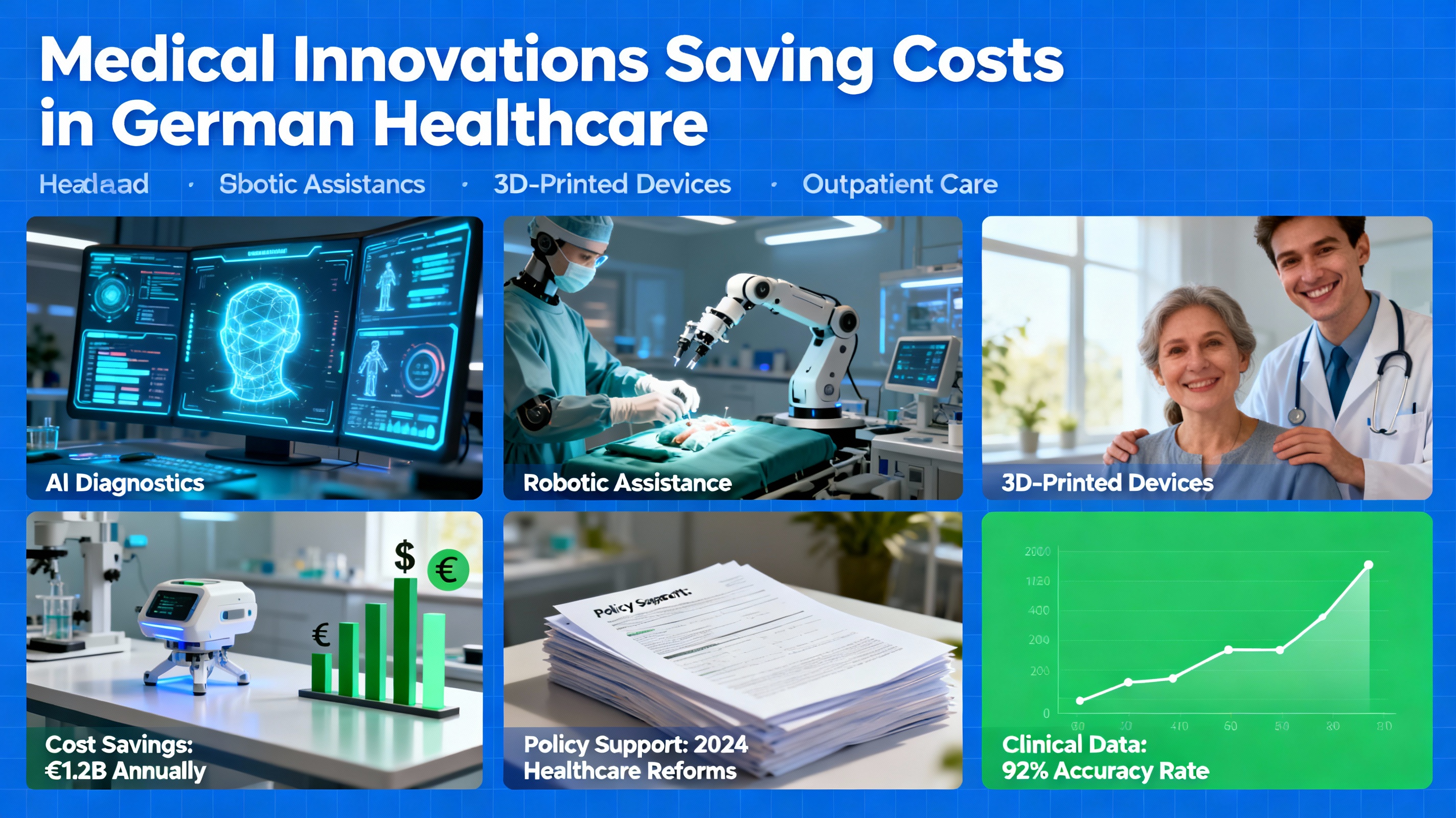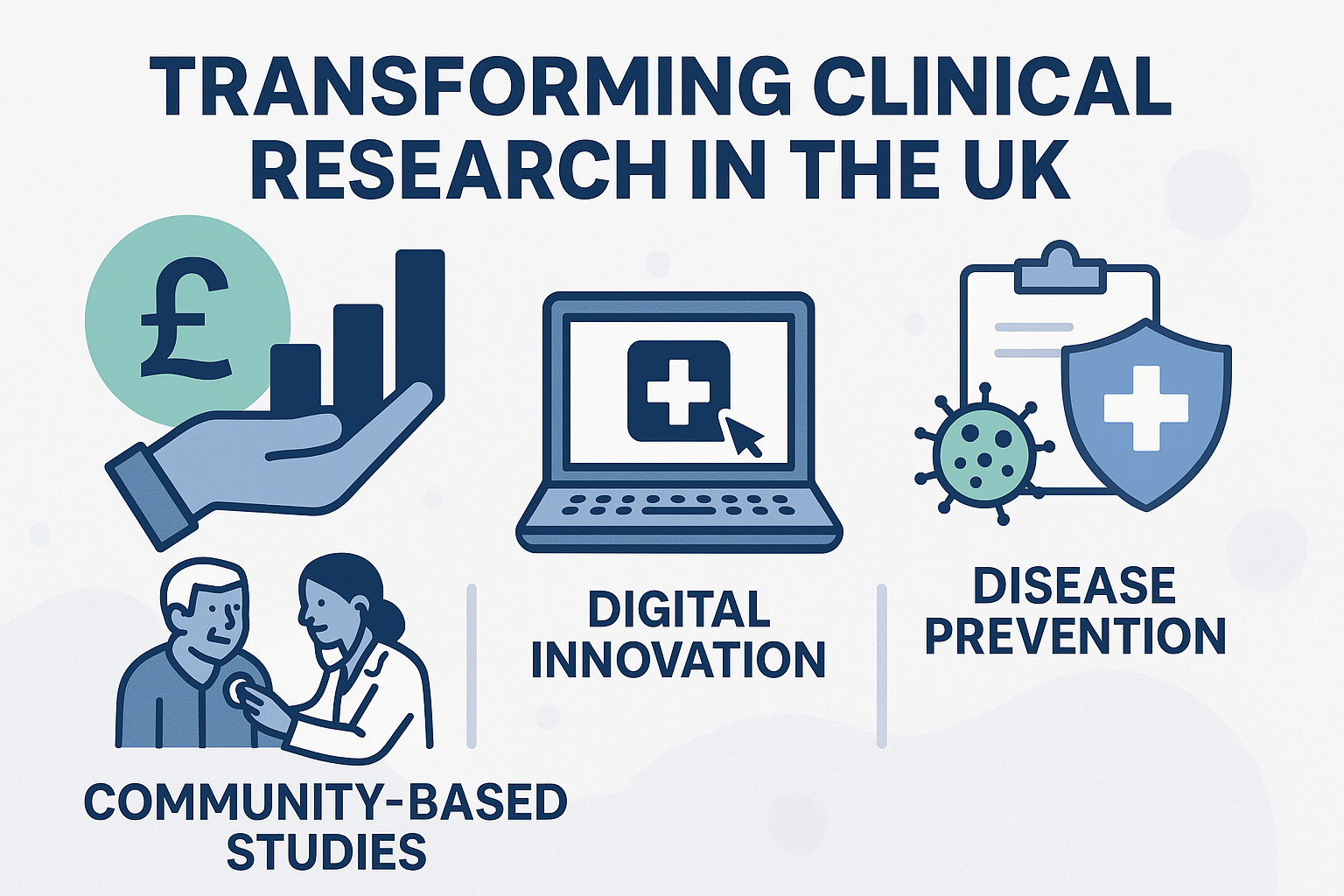Read here what's moving us right now.

We are proud to announce that Caroline Schmidt-Lucke has been appointed as an expert on the international committees ISO/TC 194 and NA 027-07-20 AA for “Clinical Investigations” (ISO 14155). Our goal is to open doors for innovative clinical trials based on established standards.
The updated ISO 14155:25 standard sets the global standard for clinical investigations of medical devices and digital health applications. ISO/TC 194 standardizes the approach for the biological and clinical evaluation of medical and dental materials and products, including the development of biological testing methods for these products, and the establishment of principles of good clinical practice for clinical trials of such products in humans. It plays a key role in ensuring high-quality clinical data and supporting secure and reliable market access in Europe.
Working closely with global experts will help drive innovation and consistency on the European market as well and strengthen trust and cooperation between manufacturers, partners and regulators worldwide.
The digital transformation in European healthcare is progressing at very different speeds. As the Deutsche Ärzteblatt points out, “other European countries are significantly ahead of Germany in digitizing their healthcare systems. Estonia has had a functional electronic health record for years, and in Finland, the population regularly uses digital health applications. ”
In Finland, patients routinely receive digital medical advice, and health data is stored electronically. One specific example is the EMOM app for gestational diabetes, which combines blood sugar measurement, activity tracking and a digital food diary. Clinical studies have shown that the app can improve fasting blood sugar, increase physical activity, and reduce both pregnancy weight gain and the rate of macrosomic babies, while saving clinical resources. AI is currently being developed to further improve these results.
Estonia's electronic health record, which has been available to all citizens since 2008, requires hospitals and practices using public health insurance to share important information via the system. Emergency personnel can access patients' medical history in real time. The system has been further developed to focus less on free text and more on structured data and supports both healthcare and research.
Countries such as Estonia and Finland show that digitization is successful when robust governance, interoperability, and evidence-based digital tools are a priority. As Germany moves forward with its own digital health strategy, it will be crucial to learn from these pioneers in order to exploit the full potential of digital medicine.
The promise of decentralised and hybrid clinical trials is no longer speculative—it is here, and it is reshaping how medical device studies are designed, conducted, and monitored. Yet for many sponsors, the leap from traditional site-centric models to AI-enabled, patient-centric designs remains a daunting regulatory and operational puzzle. At MEDIACC, we are closing that gap.
Under the Medical Device Regulation (MDR) and ISO 14155:2020, clinical investigations must demonstrate robust performance and safety data, often requiring adaptive, real-world evidence generation. The EU AI Act Adds another layer: AI systems used in trial conduct—whether for automated monitoring, risk-based quality assurance, intelligent visit scheduling, or continuous analysis of wearable-generated data—are now classified by risk. High-risk AI demands conformity assessment, human oversight, and transparent governance before deployment. This is not a barrier; it is a framework for trustworthy innovation.
We currently translate these complex requirements into actionable strategy. Sponsors need support transitioning from classical trials to decentralised models, ensuring MDR compliance while integrating AI-driven efficiencies. Designing fully digital or hybrid protocols leverage remote monitoring and digital endpoints without sacrificing data integrity or patient safety.
But technology alone is insufficient. Sites must be equipped to interpret AI-generated signals, distinguish meaningful anomalies from noise, and maintain ISO 14155-compliant oversight. That is why tailored training concepts are needed: teaching investigators and clinical research staff how to read, evaluate, and act upon AI-augmented monitoring outputs within a robust quality management system. And additionnally, all results must be measurable.
The future of clinical research is decentralised, digital, and intelligently automated. As CRO Partner, MEDIACC ensures that transition is not merely theoretical but routine, compliant, and scientifically rigorous. Let us discuss how your next study can move from Blueprint to Breakthrough.

Imagine this: A diagnosis that changes your life forever. But what if there was soon a weapon against cancer that doesn't just protect — it heals?
💉 The good news is here: Research into Cancer Vaccinations is making giant leaps. Not the classic vaccination to prevent disease — but personalised therapies that mobilise the body's own immune system against already existing tumours. That's revolutionary.
The Breakthrough with mRNA Technology
🧬 The same technology that saved lives during the COVID-19 pandemic is now showing impressive results in oncology. mRNA vaccines “train” the immune system to specifically recognize and fight cancer cells. Particularly exciting: early clinical trials show that patients whose immunotherapy is combined with mRNA vaccines live significantly longer — even with tumours that have been difficult to treat so far. Even if the term vaccination is commonly used, one would prefer to speak of antigen-based immunotherapies rather than vaccines in order to avoid confusion with vaccinations against infectious diseases and with vaccines against cancer-inducing viruses. Furthermore, “cancer vaccines” do not protect against cancer, but rather combat it when it is already present.
Personalized Rather Than One-Size-Fits All
🎯 The future thinks individually. Scientists are developing bespoke vaccines specifically adapted to the unique mutations of a tumor. The potential: more effective treatments, fewer side effects, better quality of life.
A Beacon of Hope for Millions
💪 Cancer vaccinations could fundamentally redefine oncology — from fighting recurrence to preventive applications. Whilst research continues intensively and regulatory hurdles remain to be overcome, one thing is clear: we are at the beginning of a new era in cancer treatment.
The new Prognos study commissioned by the Federation of German Industries (BDI) presents impressive figures: Innovations in the area of medical devices can save up to 9 billion euros annually in the German healthcare sector — through outpatient care, AI-based diagnostics, robot-assisted systems and intelligent materials such as 3D printing.

That is more than just cost efficiency. It is a signal to health policy: Innovation is not a luxury, but a necessity. The question is not whether we can afford innovations in medical devices — but whether we can afford to block them. The highest savings potential lies in outpatient care, where almost 3 million cases could generate savings of over 6 billion euros.
Where is the challenge?
While the economic potential is clear, the complexity of regulation is growing with strict requirements for transparency, safety, and clinical evidence. High-risk medical devices require robust data quality, documented human monitoring, and continuous performance monitoring.
This is not an obstacle, but the basis for trust.
Manufacturers who see these requirements not as hurdles but as quality features will establish themselves on the market. They will win over patients, doctors and payers because their products are not only innovative, but also evidence-based and trustworthy.
At MEDIACC, we support manufacturers in exactly this: from study planning to generating clinical evidence to conformity assessment in accordance with the Medical Device Regulation (MDR), the In Vitro Diagnostics Regulation (IVDR) and the Artificial Intelligence Regulation (AI Regulation). Because solid regulation and innovation go hand in hand.
The message is clear: The future of healthcare lies in the intelligent combination of regulatory excellence and economic efficiency.
❓ How do you navigate your path to regulatory compliance with innovative medical devices?
#Innovation #Medizinprodukte #Medizinprodukteindustrie #ZukunftderMedizin #KlinischeStudien
COVID-19 is no longer the monster of 2020 — but it's not a harmless cold either. 🦠 The level of danger is now at the level of influenza. Why should we take them both seriously?

Here are the facts:
🔹 Similar risks: Both viruses affect similar risk groups. COVID-19 is just as dangerous as the flu today.
🔹 STIKO recommendation: Booster vaccinations for everyone aged 60 and over, previous patients and nursing staff. Why Because vaccination protects against severe cases!
🔹 Study document: A Danish study involving almost 900,000 people over 65 years of age shows that booster shots work!
🔹 Current data: Hospitalizations and deaths from COVID-19 and influenza are comparable. (data up to week 35, season 2024/2025)
🔹 Vaccination quotas: Only 20.9% of people over 60 years of age have been vaccinated against COVID-19 — compared to 38.2% for the flu vaccination. Too little! 😮
Conclusion: COVID-19 and influenza are both dangerous. Particularly important for risk groups. 💪
#Gesundheit #Impfen #COVID19 #Influenza #KlinischeWissenschaft
Agents4Science 2025, hosted virtually by Stanford University, marked a breakthrough in scientific research a few days ago!

For the first time, artificial intelligence agents were recognized both as lead authors and as peer reviewers in a specialized conference environment. This breakthrough approach explored how AI systems can autonomously generate hypotheses, analyze data, and produce research results that are openly evaluated by a diverse community of researchers and technologists.
At MEDIACC, we believe that such transparent integration of AI is groundbreaking. The requirement for full disclosure of the use of AI enables clear standards and accountability and paves the way for improved scalability, faster document processing, and increased efficiency in data analysis and reporting. This opens doors for accelerated innovation and enables the development and dissemination of new therapies and medical solutions faster than ever before.
However, these opportunities also entail important responsibilities. The rise of AI-powered scientific research requires robust ethical guidelines, transparent attribution, and strict oversight to prevent distortions, misinterpretations, or misuse of sensitive health data. Standards for validation and reproducibility must keep pace with technological progress, and data security remains paramount.
What is your opinion on AI-generated clinical research? A dream come true or an absolute nightmare?
#KI #MedizinischeInnovation #Ethik #ZukunftDerWissenschaft #Interaktion
The EU's Joint Clinical Assessment (JCA) is a milestone for medical devices and in vitro diagnostics (IVDs) — a structured, EU-wide process for generating, analyzing and evaluating clinical data that ensures safety, performance, and compliance with regulatory standards.

But what does that mean for manufacturers, healthcare systems, and patients? Let's take a closer look:
🔍 What is a joint clinical evaluation (JCA)?
A systematic, collaborative evaluation of clinical evidence for high-risk medical devices (class IIb/III) and high-risk IVDs (class D). The goal? ✅ Harmonised EU-wide assessments — avoiding duplicate national reviews ✅ Faster market access — Using shared scientific evidence across Member States ✅ Increased patient safety — ensuring consistent, high-quality assessments.
📜 The legal framework: Two important EU regulations
📌 Regulation (EU) 2021/2282 (HTA Regulation, Dec. 2021)
📌 Implementing Regulation (EU) 2025/2086 (Oct. 2025)
🎯 Why is that important?
✔ 💡 Efficiency: One submission, 27 markets — reducing redundant national reviews ✔ ⏳ Speed: Faster availability of innovative medical devices across the EU. ✔ 💰 Cost savings: reduced administrative burden for manufacturers and authorities. ✔ 🌍 Competitiveness: A more attractive EU market for medtech innovations. ✔ 🏥 Impacts on patients: Higher quality and safety in healthcare through standardized assessments.
🔗 The big picture
By avoiding duplication of efforts, the JCA system pursues the following goals: ➡ Accelerating patients' access to cutting-edge medical technologies ➡ Strengthening trust in EU regulatory processes ➡ Reducing fragmentation in the evaluation of healthcare services.
📩 Let's talk about it! Schedule a non-binding appointment to discuss how we can help you optimize your clinical evaluation and market access strategy.
#MedTech #MedicalDevices #HealthcareInnovation #ClinicalEvaluation #JCA
We are proud to announce that our groundbreaking study is published in the renowned journal Cancer & Metabolism!
This article is the result of many years of efforts to resolve the ongoing debate and gain new insights into the effects of pressure-adjusted static compression (PSC) in patients undergoing chemotherapy — particularly those who develop chemotherapy-related peripheral neuropathy (CIPN).

What was investigated? We investigated how PSC affects microvascular perfusion (blood flow to the smallest vessels) and aerobic metabolism in cancer patients undergoing chemotherapy. This focus is critical because CIPN is a common, potentially debilitating side effect where nerve damage can impair quality of life and may even force a life-saving interruption in treatment.
Key findings:
The PSC, applied using standardized pressure and palm pads, resulted in significantly increased microvascular perfusion in cancer patients, even those who already had CIPN.
Interestingly, this improved blood flow was accompanied by a reduction in aerobic metabolism in the affected tissues, which indicates a protective change in the tissue environment under compression.
These findings challenge previous hypotheses that compression could reduce local blood flow and thus worsen neuropathy. Instead, PSC appears to support vascular health and tissue oxygenation.
What does this mean for cancer patients?
For patients who suffer from or are at risk of CIPN, PSC represents a promising non-pharmacological approach that protects the nerves and potentially improves everyday functions. The well-tolerated and easy-to-perform intervention supports microcirculation without increasing metabolic stress on already damaged tissue.
Why is that important?
There are currently no generally effective prevention or treatment options for neuropathy caused by chemotherapy. With increasing evidence from clinical trials and this groundbreaking study, pressure-adjusted static compression is becoming a viable, evidence-based strategy to prevent or alleviate nerve damage — and to help cancer patients sustain life-saving therapies longer and with fewer symptoms.
—
For oncologists, rehabilitation specialists, and patient advocates: Integrate PSC into supportive treatment pathways early on and monitor ongoing research, as these findings could soon lead to changes in guidelines and standard practices for treating chemotherapy side effects.
Faster, smarter, more inclusive: The UK roadmap for cutting-edge clinical research
The government update of August 2025 presents an ambitious and detailed plan to fundamentally transform the UK system for clinical research — supported by significant investments and structural reforms.

The focus is on three key changes:
- the transfer of research from hospital to outpatient community,
- the consistent use of digital innovations and
- the greater prioritization of prevention over treatment.
Four strategic pillars guide these reforms:
-faster access to clinical trials,
- tackling major health challenges,
- reducing inequalities through inclusive research and
- creating a world-class environment for life sciences.
Special features of the roadmap include the annual investment of £1.6 billion for research through the National Institute for Health and Care Research (NIHR), with the NHS benefiting from significant financial returns, particularly in subsequent intervention studies. The new UK Clinical Research Delivery (UKCRD) program focuses on cross-sector collaboration, accelerated study setups (maximum 150 days) and promotes research offerings in primary and community care for wider participation.
A key part of the strategy is the Voluntary Branded Drug Pricing, Accessibility, and Growth Program (VPAG), which expands staffing capacity and creates new commercial research centres.
The following initiatives are particularly noteworthy:
- Improved study set-up plan: This “digital-first” approach removes unnecessary bureaucracy when approving studies; the results of the first two phases were already published in 2025. The results are continuously monitored.
- “Right Research, Right Setting” initiative: Research is located where patients receive their regular care — particularly in the community and primary care — to enable wider participation and more relevant insights.
- Proactive portfolio management: The active involvement of NIHR in industry (advisory group, optimised contract drafting) shows the shift towards partnership and early problem solving.
The update also describes progress beyond Lord O'Shaughnessy's recommendations: such as faster national contract value reviews (NCVR) for commercial studies, compliance with 60-day deadlines for regulatory approvals, the introduction of a clinical trial accelerator, and the publication of transparency data at site level.
In addition, the NHS consistently integrates research implementation into everyday working life — with new guidelines, targeted promotion of personnel development and initiatives to expand digital volunteer registers. As part of the “Be Part of Research” campaign, the government has set the new goal of reaching 2 million volunteer registrations by March 2026. Innovations in confidentiality agreements, pharmacy guidelines and optimised contracts are already reducing negotiation times and regulatory hurdles.
Demonstrate the medical benefits of your product
With our many years of experience and expertise, we offer effective solutions to demonstrate the medical benefits of your product.
From the conception to the execution of preclinical and clinical investigations, we support you with customized services.
Find out how MEDIACC can help you achieve reimbursability for your products.
